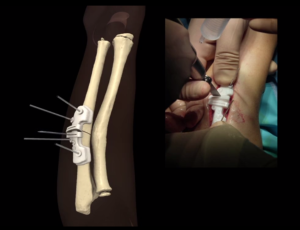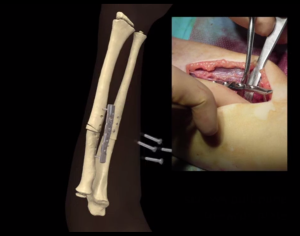A hand specialist in Belgium teamed up with Materialise to help a 7 year old child regain the use of his arm using 3D printed medical implants and surgical tools after an improperly healed fracture left it virtually unusable.
When a playground accident left Joos with a broken arm, his parents were dismayed to learn that the bone had healed incorrectly once the cast had been removed. Joos’ arm was left crooked, and had become incapable of even simple movements. The badly healed break had also bent his hand so much that it had become numb and he had completely lost the feeling in his fingers
Several doctors and physical therapists told Joos’ parents that there was nothing to be done for his arm, the fracture was in too awkward a part of the Ulna bone and conventional corrective surgery was not advisable. Desperate to help their son, they sought out hand specialist Dr. Frederik Verstreken.


“I had a child with a handicap, now he’s a normally functioning boy,” Joos’s mother Kathleen says. Here is a video report about Joos and his 3D printed arm implants:
“These cases were so difficult and complex,” explained Dr. Verstreken, “that it would not have been possible to obtain a successful reconstruction using conventional techniques.”
Verstreken has since gone on to perform the procedure for four other children who have improperly healed forearms, successfully giving them back the use of their limbs. Unfortunately standard health coverage in Belgium doesn’t cover procedures using 3D printed implants due to the technology being too new and untested. That’s likely to change however, as medical 3D printing applications are one of the fastest growing sectors of 3D printing. But with insurance or not, I’d wager for parents watching their son use his arm again, it is worth paying almost any price.


